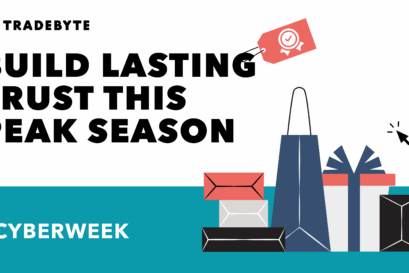In talks with Miinto: smarter growth for boutiques
Miinto connects premium and luxury shoppers with independent boutiques across Europe. The platform combines the scale of e-commerce with the local touch of boutique retail, offering a curated assortment while supporting hundreds of small and mid-sized partners.

We caught up with Andrea Pizzini, Senior Business Development Manager at Miinto, to talk about the role of marketplaces in the digitalisation of retail, what boutiques can gain beyond just sales, and how partnerships with luxury brands are evolving.
Marketplaces as a growth enabler for boutiques
For independent boutiques, marketplaces offer more than just online visibility. They provide access to integrated tools and a global audience, helping local retailers scale efficiently without losing their identity.
What’s the biggest opportunity for independent boutiques in the digital space today?
Andrea sees this as one of the biggest opportunities in the digital space today: Independent boutiques are under constant pressure to compete with larger players—especially when it comes to logistics, inventory, and reach. For Andrea, marketplaces offer more than visibility; they’re a tool to help boutiques work smarter.By joining a marketplace, boutiques can streamline stock management, reduce operational costs, and test new products or categories before committing to them in-store.
Integrated solutions can support everything from inventory tracking to shipping, making it easier for boutique owners to manage stock and reduce operational overhead. At the same time, marketplaces give access to a much wider customer base and offer a low-risk way to test new categories and brands before introducing them in their physical stores.
“Marketplaces help boutiques scale operations and test new ideas, while offering data-driven insights that can improve their offline assortment.”
It’s a shift from seeing marketplaces as pure sales channels to recognising them as valuable sources of discovery and optimisation.

With evolving consumer expectations, how can online marketplaces balance efficiency with the personal touch of boutique shopping?
“It’s about being complementary, not competitive”, says Andrea. Marketplaces don’t aim to replace multibrand stores—they enhance them. “The modern consumer expects an omnichannel experience, so it’s essential that we mirror the boutique feel in the digital space.”
That’s where innovation and personalisation come in. From curated content and premium services to AI-driven recommendations, there are plenty of ways to recreate the charm and uniqueness of boutique shopping—just tailored for the digital world.
“The goal is to offer as engaging an experience as possible through innovation and new technologies,” he explains. “That means carefully curated content, premium services, and personalisation powered by AI.”
He’s clear that marketplaces don’t aim to replace multibrand stores, but to complement them—enabling omnichannel experiences that feel both effortless and individual.

What’s the key to a successful partnership between luxury brands and marketplaces?
It’s all about mindset. In the early days, luxury brands were cautious—mainly concerned about control over the customer journey and focused on wholesale models. But with digital now a critical revenue driver, we’re seeing a major shift.
“Today, luxury brands recognise marketplaces as key strategic partners,” says Andrea. “They offer access to new markets, new customers, and new revenue streams.”
Success, he adds, depends on mindset. Brands that align with platform recommendations on markets, assortment, restocking, and campaign participation tend to perform better—without compromising brand equity.
“Seeing marketplaces not just as sales channels but as strategic partners is what really unlocks growth.”
Andrea Pizzini
Senior Business Development Manager
“I’ve been with Miinto for almost four years now, and Tradebyte was already a trusted partner when I joined. Since then, the collaboration has been smooth and instrumental—not just in optimising our marketplace operations, but also in acquiring important new partnerships along the way.”


